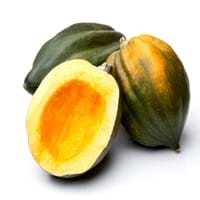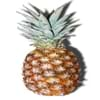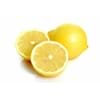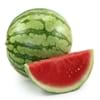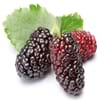Health Benefits
Asthma treatment, Bronchitis treatment, Cancer prevention, Heart care, Increases metabolic rate
Anti-inflammatory properties, Arthritis treatment, Regulates Blood Sugar
General Benefits
Anti-inflammatory properties, Controls blood pressure, Digestive aid, Eye care, Healing of wounds, Maintains healthy cholesterol level, Strengthens bones, Treatment of sinusitis, Treatment of common cold
Boosts immune system, Controls blood sugar levels, Digestive aid
Skin Benefits
Anti-aging benefits, Brightens and lightens complexion, Skin cleansing, Treatment of acne, Treatment of dark spots
Nourishes skin, Protects skin from oxidative stress
Hair Benefits
Prevents hair loss
Prevents hair loss, Promotes longer and healthier hair, Regulates hair growth
Allergy Symptoms
Abdominal pains, Itching in tongue and other parts of mouth, Sneezing, Swelling, Tingling sensation in wrist and face, Vomiting, Wheezing
Asthma, Red rash, Swelling of mouth, tongue or lips
Side Effects
Causes swollen mouth, Allergic reaction, Diarrhoea, Nausea, Skin rash, Vomiting
Diarrhoea, Vomiting
Best Time to Eat
Best if taken as a breakfast (or empty stomach), As a snack in the late afternoon, Eat the fresh ones, avoid mixing with any other foods, don't eat after meal., Morning time (before lunch)
Along with meal, As a snack in the late afternoon, Don't eat after meal, Eat the fresh ones, avoid mixing with any other foods, don't eat after meal.
Vitamin B5 (Pantothenic Acid)
Vitamin C (Ascorbic Acid)
Vitamin E (Tocopherole)
Not Available
Vitamin K (Phyllochinone)
Not Available
Lutein+Zeaxanthin
Not Available
Phytosterol
Not Available
Calories in Fresh Fruit with Peel
Not Available
Calories in Fresh Fruit without Peel
Not Available
Type
Berry, Tropical
Berry
Varieties
Smooth Cayenne, Abacaxi, Red Spanish and Queen
Bush Table Queen, Heirloom Table Queen, Festival Hybrid, Early Acorn Hybrid, Table Ace, Ebony and Cream of the Crop
Color
Yellow
Dark green, Green-yellow, Orange green
Inside Color
Yellow
Yellow
Taste
Strong, Sweet, Tart
Sweetish
Origin
Central America, South America
Central America, North America, Unknown
Grows on
Not Available
Vines
Soil Type
Clay, Sandy loam, Well-drained
Well-drained
Climatic Conditions
Hot, Sunny
Cold, Sunny
Facts about
- A single pineapple takes 3 years to reach maturation.
- Pineapple is not an apple, but is actually a berry.
- The name is with reference to its resemblance to pine cones.
- Pineapple is sweeter if scales are more.
- It was named as Acorn Squash for its resemblance to a large ribbed acorn.
- It is said that squash was being grown in Mexico as long as 10,000 years ago.
- It was the first food cultivated by native American Indians.
Top Producer
Costa Rica
China
Other Countries
Brazil, India, Philippines, Thailand
Egypt, India, Iran, Italy, Mexico, Russia, Turkey, Ukraine, United States of America
Top Importer
United States of America
Costa Rica
Top Exporter
Costa Rica
United States of America
Botanical Name
Ananas comosus
Cucurbita Pepo
Synonym
Ananas sativus
Winter Squash
Subkingdom
Tracheobionta
Tracheobionta
Division
Magnoliophyta
Magnoliophyta
Class
Liliopsida
Magnoliopsida
Subclass
Commelinidae
Dillenhidae
Order
Poales
Cucurbitales
Family
Bromeliaceae
Cucurbitaceae
Generic Group
Pineapple
Not Available
Compare Pineapple and Acorn squash
It is important compare Pineapple and Acorn squash as both the fruits have a different nutritional value. Their comparison can be done on the basis of their vitamin and mineral content, calories, benefits as well as characteristics, making it easier for us to choose the best fruit for our diet. Their general health benefits are as follows:
Pineapple Benefits: anti-inflammatory properties, controls blood pressure, digestive aid, eye care, healing of wounds, maintains healthy cholesterol level, strengthens bones, treatment of sinusitis and treatment of common cold.
Acorn squash Benefits: boosts immune system, controls blood sugar levels and digestive aid.
Fruits are also used as a remedy for various hair problems. The hair benefits of Pineapple are: prevents hair loss and hair benefits of Acorn squash are: prevents hair loss, promotes longer and healthier hair and regulates hair growth. Some fruits are known to cause allergic reactions. The allergy symptoms of first fruit are: abdominal pains, itching in tongue and other parts of mouth, sneezing, swelling, tingling sensation in wrist and face, vomiting and wheezing and the symptoms of second fruit are: asthma, red rash and swelling of mouth, tongue or lips. Get sorted Pineapple vs Acorn squash comparison with the help of fruit comparison tool by fruitvs.com.

